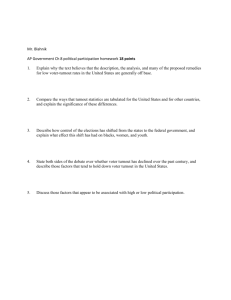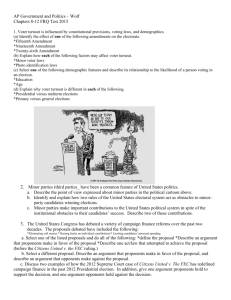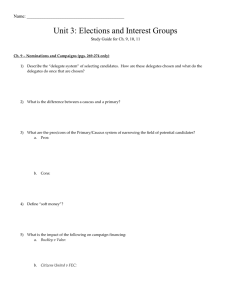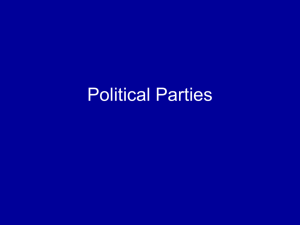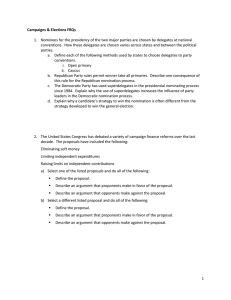FRQ Study Guides 7, 8, 9 - St. Francis School District
advertisement
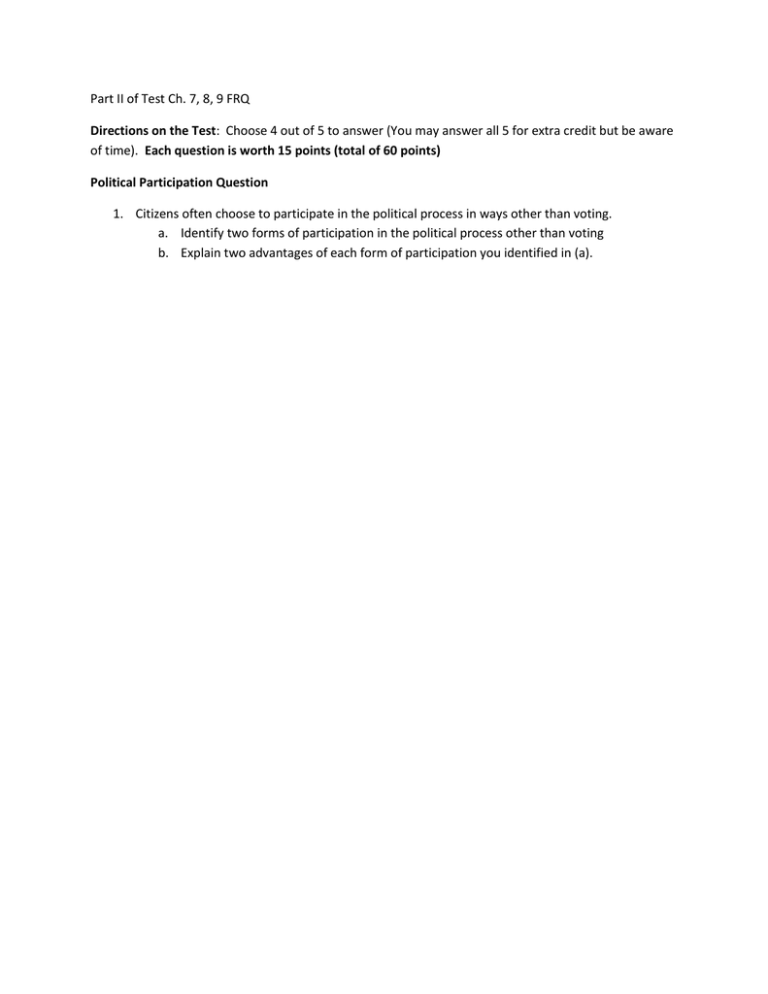
Part II of Test Ch. 7, 8, 9 FRQ Directions on the Test: Choose 4 out of 5 to answer (You may answer all 5 for extra credit but be aware of time). Each question is worth 15 points (total of 60 points) Political Participation Question 1. Citizens often choose to participate in the political process in ways other than voting. a. Identify two forms of participation in the political process other than voting b. Explain two advantages of each form of participation you identified in (a). Public Opinion Question 2. Public opinion polls are a way to link the public with elected officials. Members of Congress often use polls to understand the views of their constituents, but they must also pay attention to other political considerations. a. Identify two characteristics of a valid, scientific, public opinion poll. b. Explain why each of the following enhances the influence of public opinion on the voting decisions of members of Congress. i. Strong public opinion as expressed in polling results ii. Competitive re-elections c. Explain why each of the following limits the influence of public opinion on the voting decisions of members of Congress. i. Legislators’ voting records ii. Party leadership Political Parties Question 3. Nominees for the presidency of the two major parties are chosen by delegates at national conventions. How these delegates are chosen varies across states and between the political parties. a. Define each of the following methods used by states to choose delegates to party conventions. i. Open primary ii. Caucus b. Republican Party rules permit winner-take-all primaries. Describe one consequence of this rule for the Republican nomination process. c. The Democratic Party has used superdelegates in the presidential nominating process since 1984. Explain why the use of superdelegates increases the influence of party leaders in the Democratic nomination process. d. Explain why a candidate’s strategy to win the nomination is often different from the strategy developed to win the general election. Voter Turnout Question (political participation) 4. In the last half of the twentieth century, voter turnout in federal elections has declined. During the same period, voter turnout has been higher in presidential elections than in midterm elections. a. Identify two factors that have contributed to the overall decline in turnout in federal elections and explain how each factor has contributed to the overall decline. b. Identify and explain two reasons why voter turnout has been higher in presidential elections than in midterm elections. (Voter turnout/ Political participation question) 5. In the United States political system, there are several linkage institutions that can connect citizens to government. Elections constitute one such institution. Because of low voter turnout, elections represent an imperfect method of linking citizens to their government. Even when there is low voter turnout, however, other linkage institutions can connect citizens to government. a. Describe how each of the following is related to the likelihood of voting i. Age ii. Education b. Identify one current government electoral requirement that decreases voter turnout. Explain how it decreases voter turnout. c. Identify one linkage institution other than elections and explain two ways it connects citizens to government

